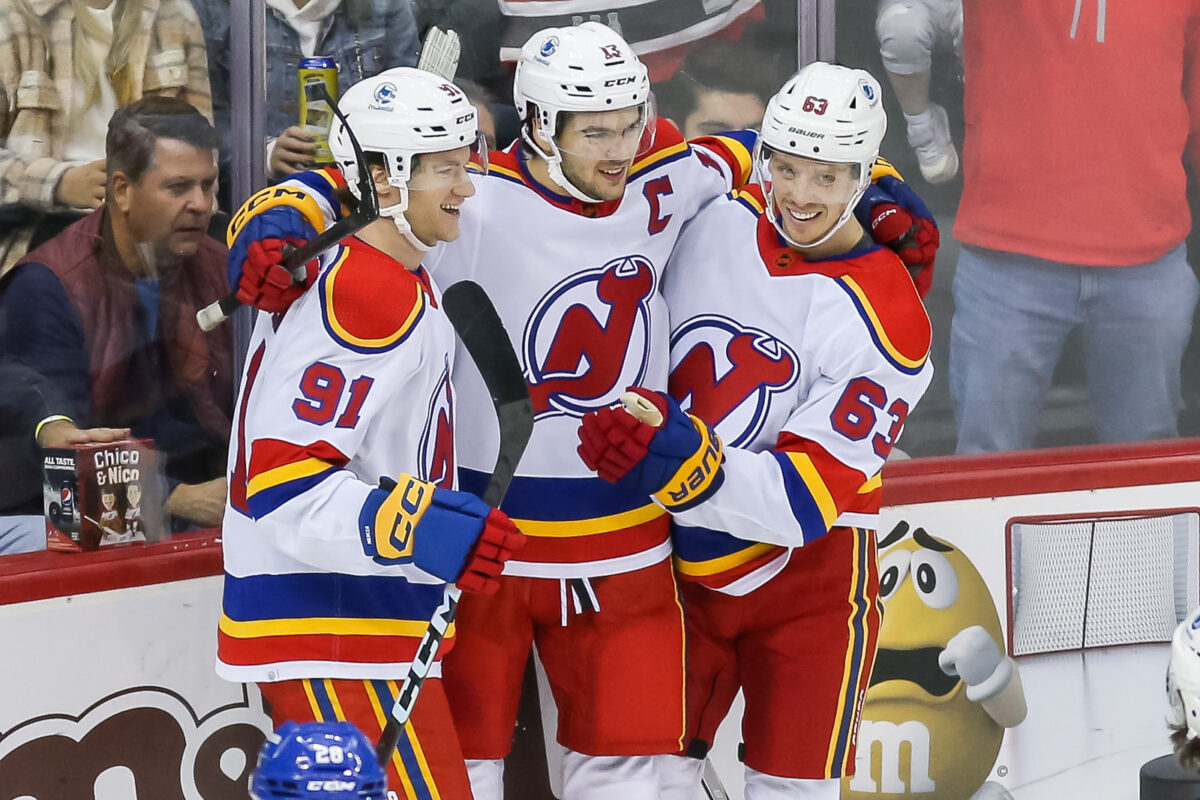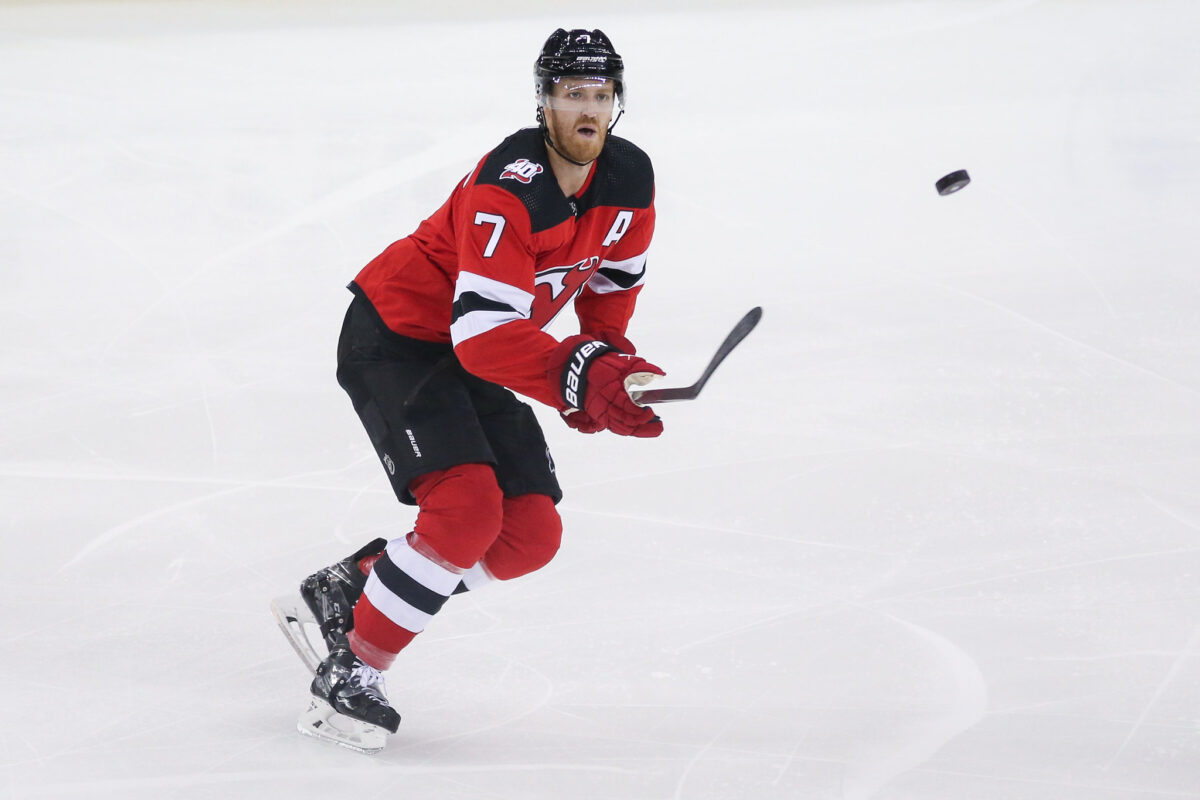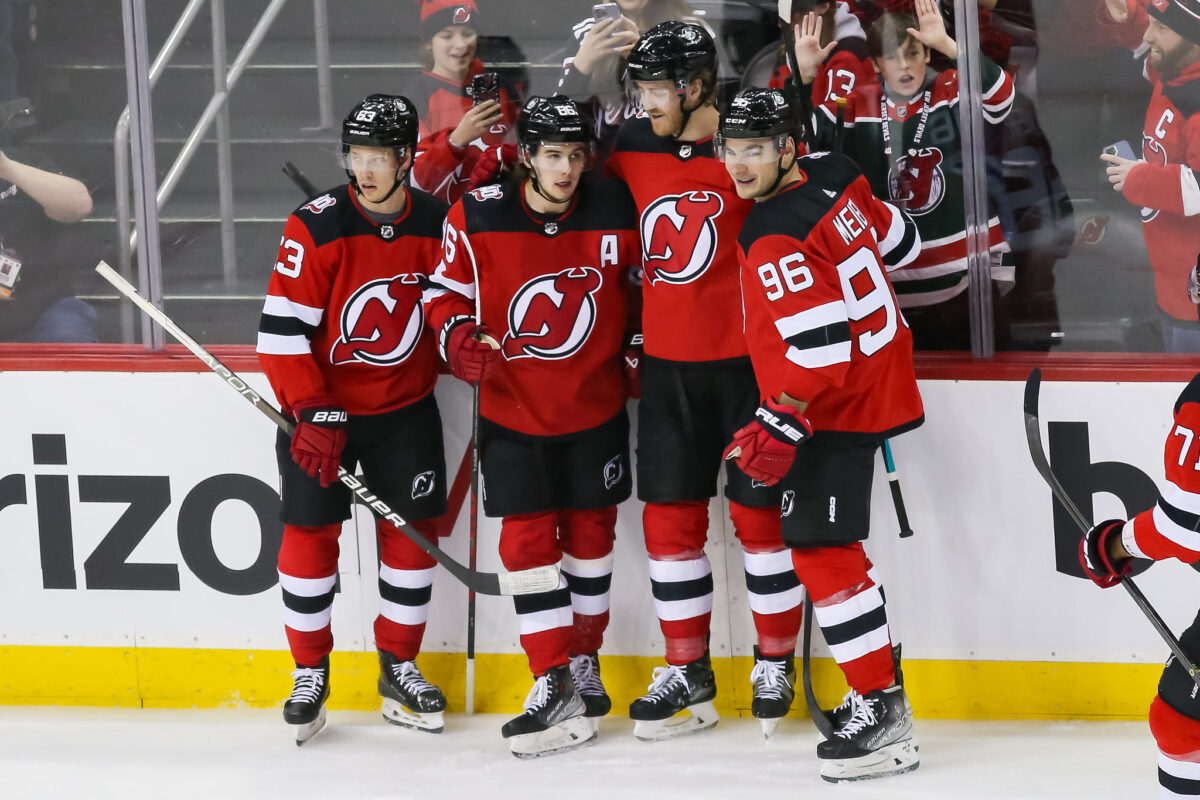One of the major keys to maintaining the New Jersey Devils’ status among the elite teams in the NHL is gaining improvement and consistency with the man advantage. Last season, the team rose from 18th place to 13th in the NHL, scoring goals at a rate of 21.9%. An incremental gain of as little as 3% would vault them into a virtual tie for fifth overall. With the losses of experienced defenders in Damon Severson and Ryan Graves, it may take the team time to come together defensively, and the easiest way to offset that deficiency would be to increase power play scoring and efficiency.
Varied Personnel
Last season, the Devils’ power play suffered from a lack of diversity and depth. At times, the entire forward group shot left-handed which limited opportunities for cross-ice one-timers and balance. The team had likely expected rookie Alexander Holtz to step into the right-handed shot slot, but his difficulty avoiding the scratch suite hampered the power play. This season, the addition of Tyler Toffoli will diminish the need for Holtz, but a shot the caliber of Holtz’s is unmatched on the team and could be weaponized on the power play.
Forwards
The Devils have no shortage of forwards with power play experience. If you count Michael McLeod, who has been used to win important power-play faceoffs, then no less than 11 of the 12 forwards expected to make the opening night lineup have spent time on the power play. This depth should give the new power play coordinator, assistant coach Travis Green, many options at his disposal.

Last season, with a full year of a healthy Nico Hischier, Jack Hughes, Jesper Bratt, and Dougie Hamilton, the team was able to climb into the top half of the power play rankings. Despite the improvement and talent, the team lacked a player with double-digit power-play goals. That should change this season.
The addition of Timo Meier added to the potential potency but seemed to cause issues with there being too many left-hand shot players on the top unit. The acquisition of Toffoli and the potential emergence of Holtz hold the keys to unlocking a unit with the potential for a top-five finish. Both Meier and Toffoli are experienced power-play finishers, and each would have been the Devils’ leader in power-play goals last season.
The Devils’ forward group includes players who can create open shots and complete dangerous passes, finishers, below-the-goal line passers, and net front players. The question moving forward is not whether there is enough talent, it is how the pieces fit together.
Defenseman
In many ways, Hamilton is the prototypical power-play quarterback in the current NHL. He has great vision, can accurately blast slap shots on net, and is deft walking the blue line. He demonstrated this value last season, finishing second to Jack Hughes in both goals and points on the power play. The first power-play unit is in excellent hands with Hamilton at the helm.

The real question on the blue line is who replaces Damon Severson on the second power-play unit. The Devils could put John Marino out with the second group as he played there some last season, however, the more likely option is Luke Hughes. Hughes possesses many of the skills of Hamilton but is a more dynamic skater and stick handler. He is the future for this team, the wonder is whether he is also the now. The Devils absorbed the losses of Severson and Graves by adding Colin Miller and bringing back Kevin Bahl. Bolstering options for the penalty kill may allow Hughes to be free to see power play time without being overburdened.
Potential Combinations
Below is a look at how the Devils could and should deploy their power play units. It is reasonable to expect that the Devils will begin with a more traditional approach to the power play, but given their expanse of offensive talent, there is no reason not to get creative and push the envelope should the units grow stagnant. Holtz has not been included due to the uncertainty surrounding his place in the team, however, he could slot in to use his elite right-hand shot on most of the units below should he be available.
Combination 1 – Top Heavy
In this scenario, the Devils would deploy Jack Hughes, Hischier, Meier, Toffoli, and Hamilton as the first power-play unit, with Bratt, Mercer, Haula, Palat, and Luke Hughes on the second power-play unit. The first unit would be quarterbacked by Hamilton, with Meier net front and able to work in the slot or down the right wing, Hughes would be free to roam and find gaps while Hischier would be the playmaker from below the goal line and as a bumper. Toffoli would roam the left faceoff dot and slot seeking out opportunities to finish. The rotations would allow for Toffoli and Meier to go in and out of one-timer spots and open up the ice for Hughes. The only downside for this group is it lacks a player you want taking a faceoff should Hischier be chased from the dot. In the past, the Devils remedied this by having McLeod take the important faceoff and then be immediately replaced.
Related: Devils’ Ideal Line Combinations for 2023-24
The second unit has an influx of talent with the permanent addition of Bratt and Mercer. This unit is largely interchangeable but lacks the finishing prowess of the top unit, though the veteran presence of Haula and Palat and the playmaking of Bratt would make this a dangerous unit. Another option here would be Holtz in the Toffoli role looking for ways to deposit one-timers in the back of the net. This is the most talent-optimized of the potential units
Combination 2 – Balanced Units
Starting with the belief that there is no first power-play unit without Hughes, Hischier, and Hamilton, this unit would insert Mercer and Meier, giving the first unit a right-hand shot and a faceoff taker in Mercer. The second unit would be Toffoli, Haula, Palat, Bratt, and Luke Hughes. This combination would allow for snipers in both units and make it difficult for teams to focus on stopping only the top unit. With Haula facilitating the play, Toffoli and Bratt at opposite dots, and Palat in the dirty areas, this group has the potential to be one of the top second units in the league.
Combination 3 – Old School
In the 1900s, as the kids would say, almost every power play was comprised of three forwards and two defensemen. Should the Devils be in a position where they have a third defenseman they like running a power play, they could play Hamilton and Luke Hughes together on the first unit. That unit would be the Hughes brothers, Hischier, Hamilton, and Meier. The Devils tinkered with a unit like this in the playoffs last year after deciding that the answer to the missing right-hand shot was on their blue line in Hamilton. This unit would allow the team to use the playmaking skills of both Hughes brothers while allowing Hamilton to find gaps to utilize his lethal shot. It may be an option in games where the team is ahead, and Ruff wants two defensemen on the ice. It would also open up space for Toffoli on the second unit, which could be Bratt, Haula/Palat, Toffoli, Mercer, and Marino/Nemec.
Combination 4 – New School
While the two-defenseman unit may be passé, the bolder teams are now looking at ways to implement a five-forward unit. When you have accomplished two-way forwards like Hischier, Mercer, Haula, and Palat, a five-forward unit would not create defensive liabilities. The ideal group would likely be substituting Bratt for Hamilton alongside Hischier, Hughes, Meier, and Toffoli. The ability to interchange amongst this group would be difficult to defend. Jack Hughes walking the blue line and dishing no-look diagonal and cross-ice passes would be fun to watch.

If the Devils go to a five-forward look on the first power-play unit, they could then deploy the two-defensemen look on the second. The coaches would have Mercer, Palat, and Haula to plug in with Hamilton and Luke Hughes. Going this way would certainly put pressure on defenses to have to plan for two vastly different styles and matchups.
Combination 5 – If It Ain’t Broke…
While not placing in the top ten last season, the power play did show improvement, and an argument could be made that keeping the first unit of Hughes, Hischier, Bratt, Meier, and Hamilton together would pay the biggest dividends, especially if Mercer and Toffoli are pushed down to the second unit. The main issue with this version of the first unit is that it is too left-handed. The only right shot is Hamilton, which cuts down on the ability to get off one-timer on cross-ice right-to-left passes. Certainly, adjustments could be made to have Hamilton slide down into that area, but that opens up other issues.
Keeping the band intact would also again benefit the second group as adding a player the caliber of Toffoli to an already strong, veteran forward group would give the unit more bite. A unit of Luke Hughes, Palat, Haula, Toffoli, and Mercer would provide a significant threat and create dirty goals, the hallmark of a successful secondary unit, as all of the forwards play well around the cage.
Can This Be a Top Five Unit?
The pieces are now all in place for this group to become a feared unit. They no longer lack power-play specialists. They no longer lack right-handed shooting. They no longer lack the depth to fill a second power-play unit with credible scorers. The most important improvement would be drawing more penalties. Last season, the Devils finished 31st in power-play time on ice, while 23rd in total power-play goals. With the improvement in the lineup, an increase in opportunity should be a boon to allow the new players to acclimate and the stars to continue to improve. With time, there is no reason this unit should not break into the top ten with a chance to end in the top five.
